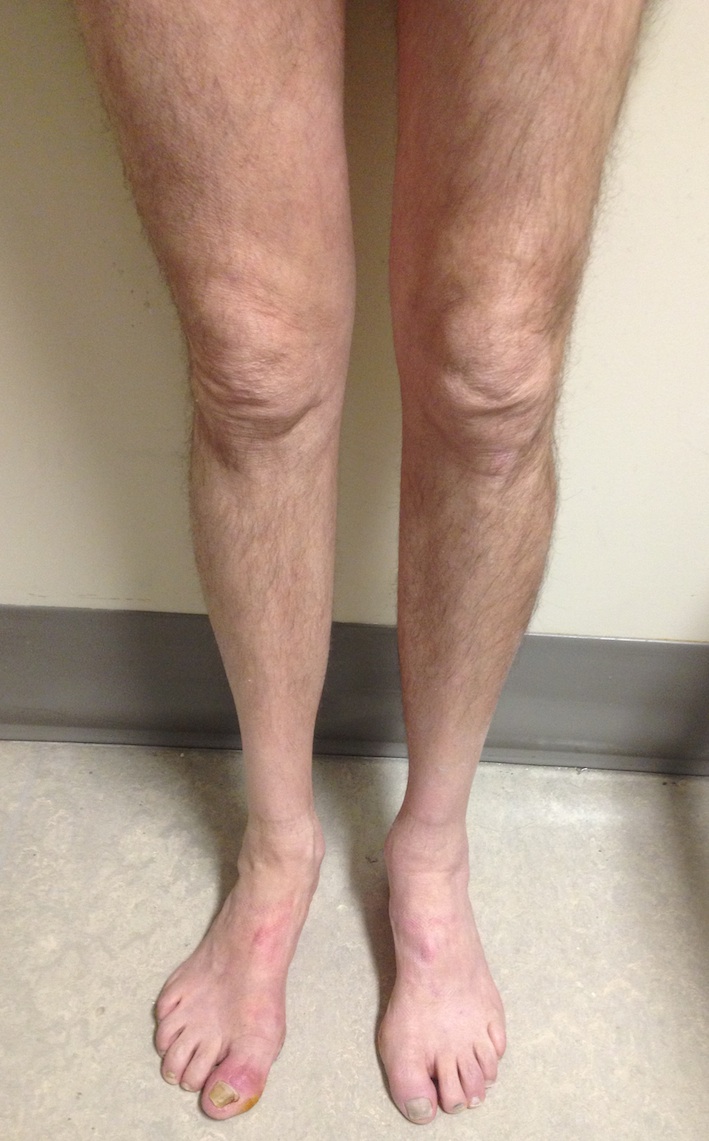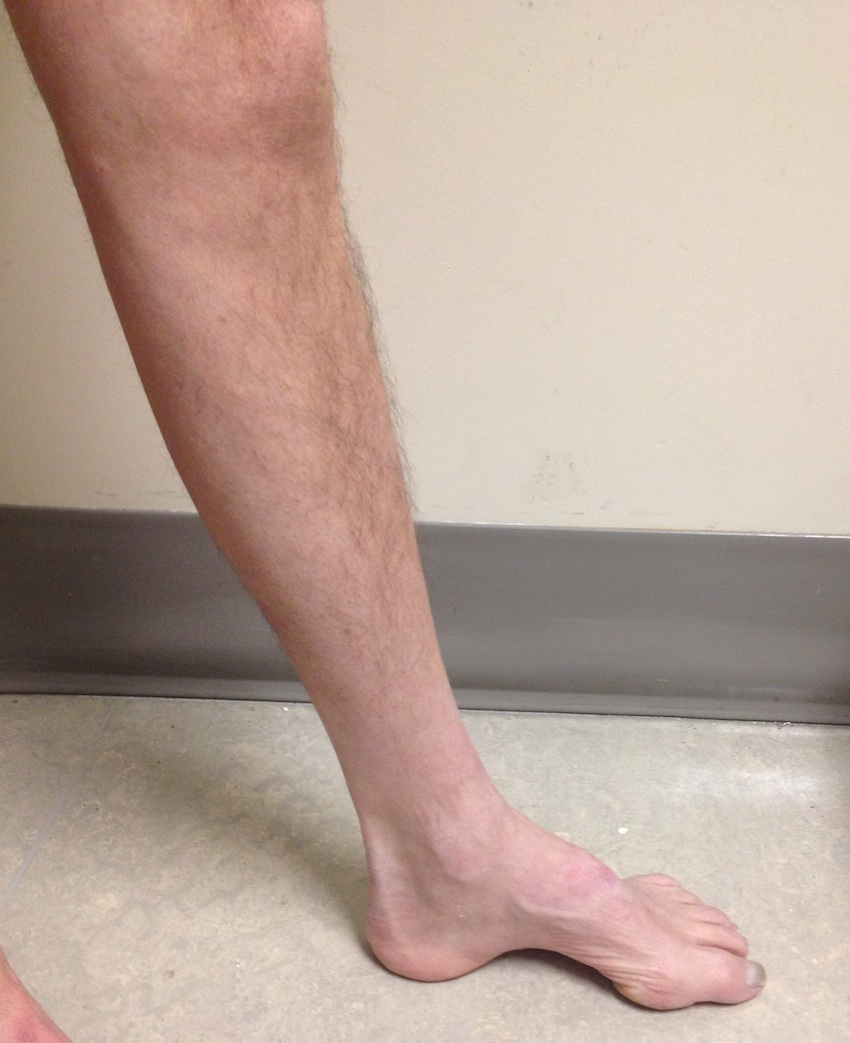Hereditary Motor Sensory Neuropathies I-III
Epidemiology
1: 3000
Definition
Group of inherited peripheral sensory & motor neuropathies
- includes Charcot Marie Tooth Disease
Classification
Hypertrophic vs Neuronal HMSN
I Hypertrophic CMT
II Neuronal CMT
III Infantile Hypertrophic Neuropathy - Dejerine-Sottas
IV Refsum's disease
Orthopaedic Complications
Cavovarus Foot
Claw Toe
Hip Dysplasia
10 % CMT
- muscle imbalance promotes femoral anteversion & valgus neck
- 2° acetabular dyplasia
Management
- as per usual
- NB care with sciatic nerve as more susceptible than normal
- usually bony surgery
Scoliosis
50%
- management as per idiopathic
Hypertrophic CMT HSMN I
Definition
Demyelinating peripheral neuropathy
- repetitive demyelination & remyelination leads to nerve hypertrophy = Onion bulb
- more demyelinated fibres than myelinated
Characterised by
- demyelination
- areflexia
- decreased nerve conduction velocity
Aetiology
AD
- triple dose of peripheral myelin protein 22
- chromosomal linkage on chr 17 (17p11.2)
- gene encodes periph myelin ptn 22
Histology
Demyelination & fibrosis
- 'Onion-bulb' appearance
Clinical Features
Present in children / teens
Lower limbs more affected
Areflexia
Symmetrical distal muscle weakness and wasting
- weakness progresses to all muscles distal to knee
- develop high-stepping drop-foot gait
- inverted champagne bottle
Glove and stocking sensory loss
Cavo-varus
- initial mild cavus & toe clawing
- becomes rigid
Upper limb involvement
- begins later
- starts with intrinsic wasting
- mixed median and ulnar
- then radially supplied muscles
NCS
Motor nerve conduction velocities decreased by > 50%
Diagnosis
Nerve Biopsy
Genetic testing
- mutation in 17q11 or X-linked connexin 33
Neuronal CMT HSMN II
Differences
- axonal neuropathy without demyelination
- reflexes preserved
- normal nerve conduction velocity
Aetiology
AD
- abnormality in spinal cord neurones
Histology
- neuronal degeneration with preservation of myelin
Clinical Features
Present in teens / early adulthood
- less disabling than HSNM I
- upper limb involvement less severe than Type 1
Reflexes present
Glove and stocking sensory loss only mild
More profound distal lower limb involvement than Type 1
- stork-leg appearance
- wasted distal thigh / leg muscles
- flail foot
- calcaneocavus deformity


Investigations
Motor NCS normal
Infantile Hypertrophic Type III
Aetiology
Dejerine-Sottas disease
- AR (no normal gene for peripheral myelin ptn 22 present)
Pathology
Hypertrophic interstitial neuropathy
- histology shows segmental demyelination & marked nerve thickening with Perineural fibrosis
Clinical Features
Presents in infancy
- pes cavus & drop foot
- stocking-glove sensory loss
- significant spinal deformity
- confined to wheelchair by 30s
Investigations
Markedly slowed motor NCS
Refsum's disease Type IV
AR
- rare disease with Cranial Nerve involvement
